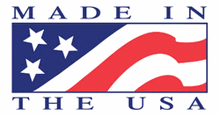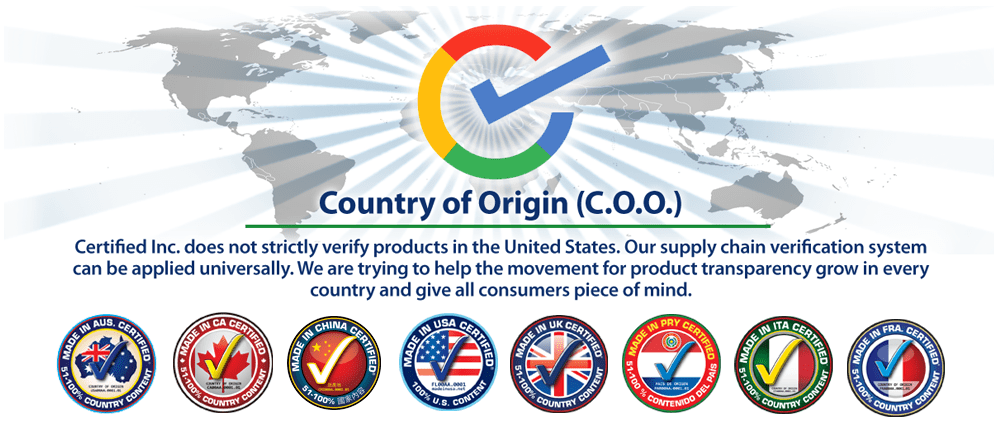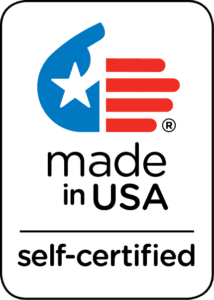
Verifying Claims of American Origin
Homegrown, Homemade Pride
For as long as any of us can remember, there has been special pride in products made or grown in our own country, whether the United States or Canada. Not surprisingly, people in many other countries also take pride in their products.
Economic Stakes
For us here in North America – USA, Canada, Mexico – this is no longer an issue of pride, but of economic reality. Many of the manufacturing jobs on this continent have gone across the Pacific Ocean or south of the Panama Canal.
Quality
The quality of materials and produced in several parts of the world has always been an issue, even more so now. This is especially true when it comes to foams used in mattresses and pillows, such as memory foam. Here at MemoryFoamMattress.org, we recommend foams made in the United States. Quality foams are also produced in Canada and Europe (especially in Sweden, Denmark and Germany).
Turning Home
For the past few decades, Americans have been deciding their shopping decisions largely by price. Now more Americans are considering country of origin. Some say ABC (Anyplace But China), but surveys and polls show that the trend is toward favoring domestic production. Canadians are looking for things “Made in Canada.” And people in the States look for “American Made” and “Made in USA.”
Is It Made In The USA?
Manufacturers and distributors have been aware of this trend, and many have been quick to label products with “Made in America” labels and stickers. However, there has been confusion over what is or isn’t made here. Adding to the confusion is planting national colors on labels and packaging, with a red maple leaf in the north, and stars and stripes to the south, which suggest domestic production even if not claimed.
Setting Standards
 The obvious need is for standards and reliable verification of domestic origin. In the United States, the Federal Trade Commission (FTC) has published Complying with the Made in USA Standard, which defines what does and does not qualify as Made in USA. It says, “Traditionally, the Commission has required that a product advertised as Made in USA be ‘all or virtually all’ made in the U.S.”
The obvious need is for standards and reliable verification of domestic origin. In the United States, the Federal Trade Commission (FTC) has published Complying with the Made in USA Standard, which defines what does and does not qualify as Made in USA. It says, “Traditionally, the Commission has required that a product advertised as Made in USA be ‘all or virtually all’ made in the U.S.”
As to what must be labeled and what may be labeled, the FTC states that “automobiles, textile wool and fur products” must be labeled as to country of origin, even when produced here. All other products may be labeled as made here, but if so labeled they must meet certain standards: “However, manufacturers and marketers who choose to make claims about the amount of U.S. content in their products must comply with the FTC’s Made in USA policy.”
The FTC standards cover at least three levels of the Made in USA claim: Unqualified, Qualified, and Claims for specific processes or parts.
The Seal
Now about the labels. For most goods, labeling is voluntary, but if challenged, manufacturers and distributors must back up their claims. Anyone can display a seal proclaiming American Made, or Made in America or Made in USA. But there are two certifications requiring some documentation of the claim: Made in USA Certified and Made in USA Brand. The first one has a greater level of trust than the second.
Made in USA Certified
The “Made in USA Certified” is administered by Certified, Inc., which was established specifically to verify the validity of claims of American origin of products in the United States, and soon included Canadian origin. Since then it has expanded to certification of other claims, such as Non-GMO, Kosher, and Vegan. By now it certifies the country of origin for products from eight nations.

Companies applying to have their products certified as made, grown or serviced in the USA first fill out the forms, answering questions about supplies, components and assembly. This is followed by an audit of the supply chain and locations of operations. All these elicit affidavits (also subject to audit) from producers and vendors throughout the chain. The goal is to ascertain whether the products under consideration meet FTC standards. The four seals for this are Made in USA Certified, Product of USA Certified, Service in USA Certified and Grown in USA Certified.

There are also seals for specific products. One which may appear on memory foam mattresses or other bedding is for Calcot, the cooperative marketing association for cotton growers in California, Arizona, New Mexico and Texas.

Several bedding manufacturers use the Made in USA Certified seal, including Selectabed, Tempflow and Snuggle-Pedic.
Made in USA Brand

The “Made in USA Brand” is based in Columbus, Ohio. It is distinguished from Made in USA Certified primarily in two ways. First, the companies bearing this seal are self-certified. Then, only U.S.-based companies can apply to use this seal.
U.S. companies apply for the right to use the seal. Then they file an affidavit affirming that their products are made in the United States. If a company’s products are found to not be made in the USA, their right to use the seal is revoked. Random audits may be conducted.
The advantage of the Made in USA Brand is that it is less expensive, therefore more affordable for smaller firms. Restricting it to firms based in the U.S. first weeds out foreign companies, making the claim of American manufacturing more believable.
Is It Certified?
If buying goods made in the United States is a priority, don’t fall for just any claim of origin, whether specific or implied. Look for one of the two seals described above as verification that the poduct meets the standards for being Made in USA.

